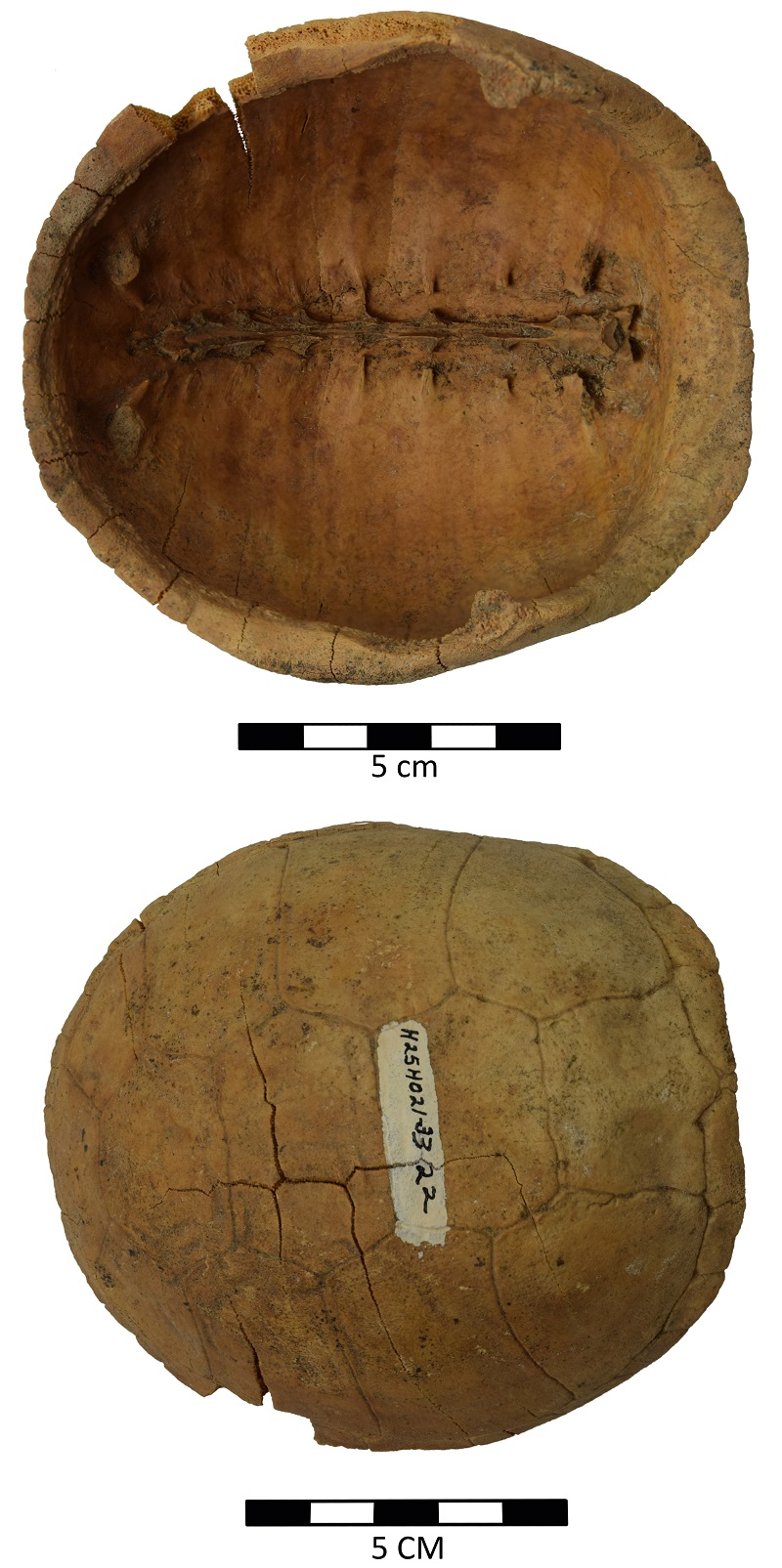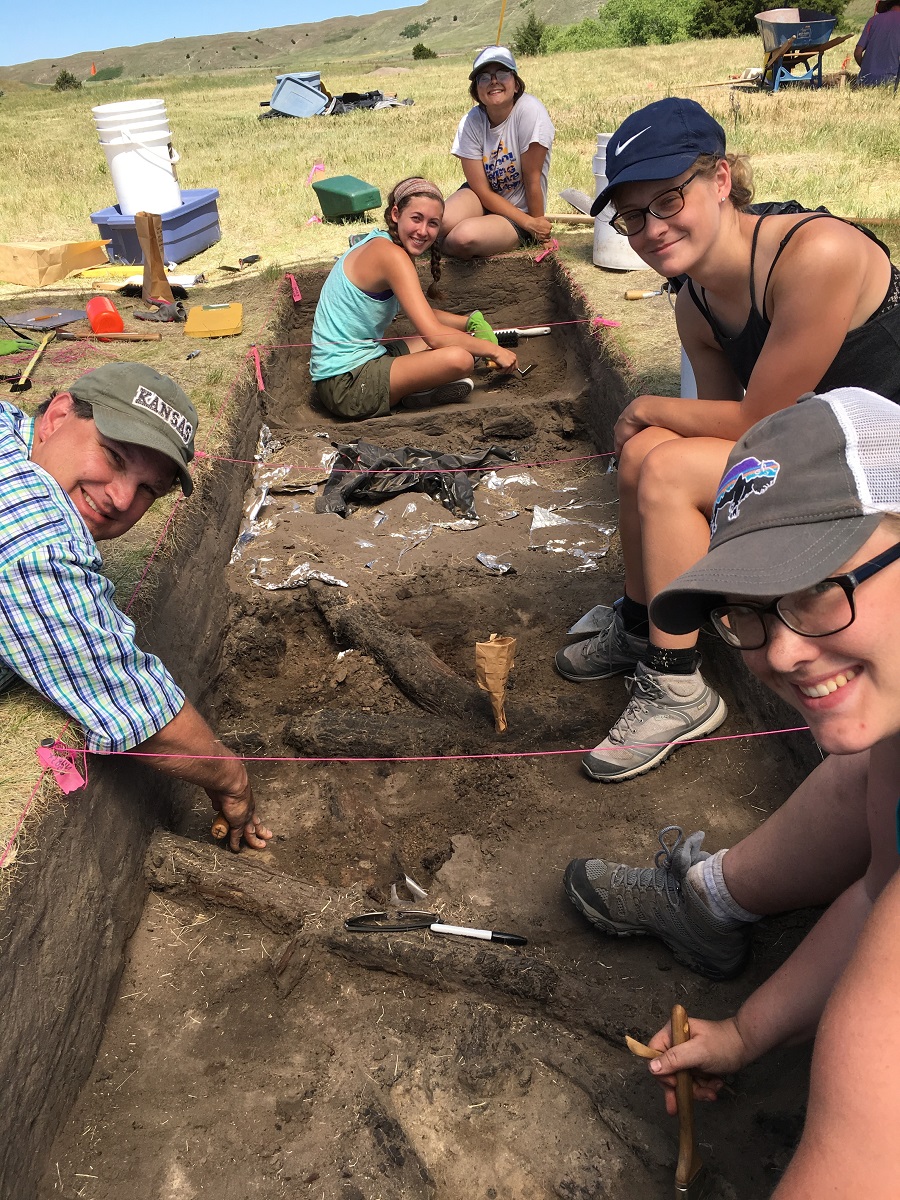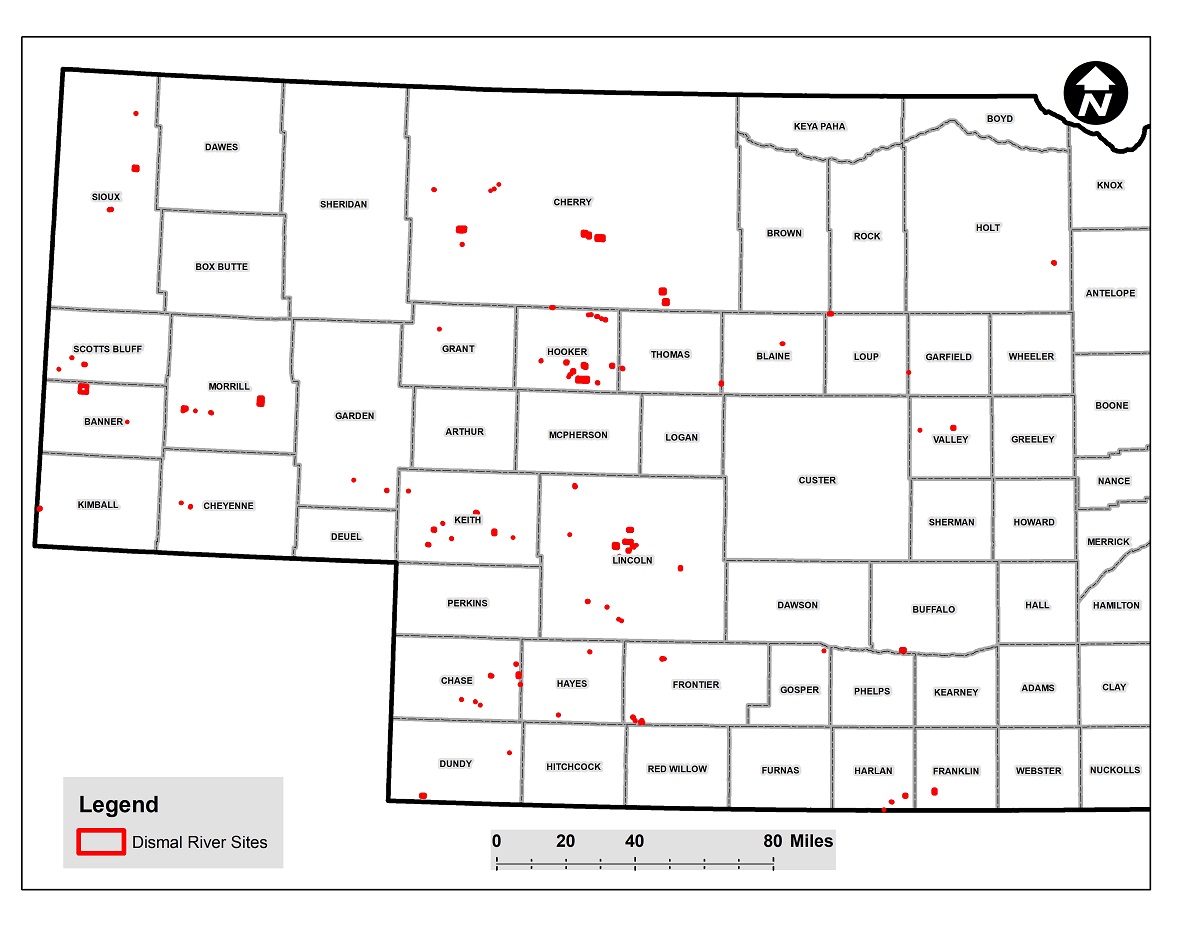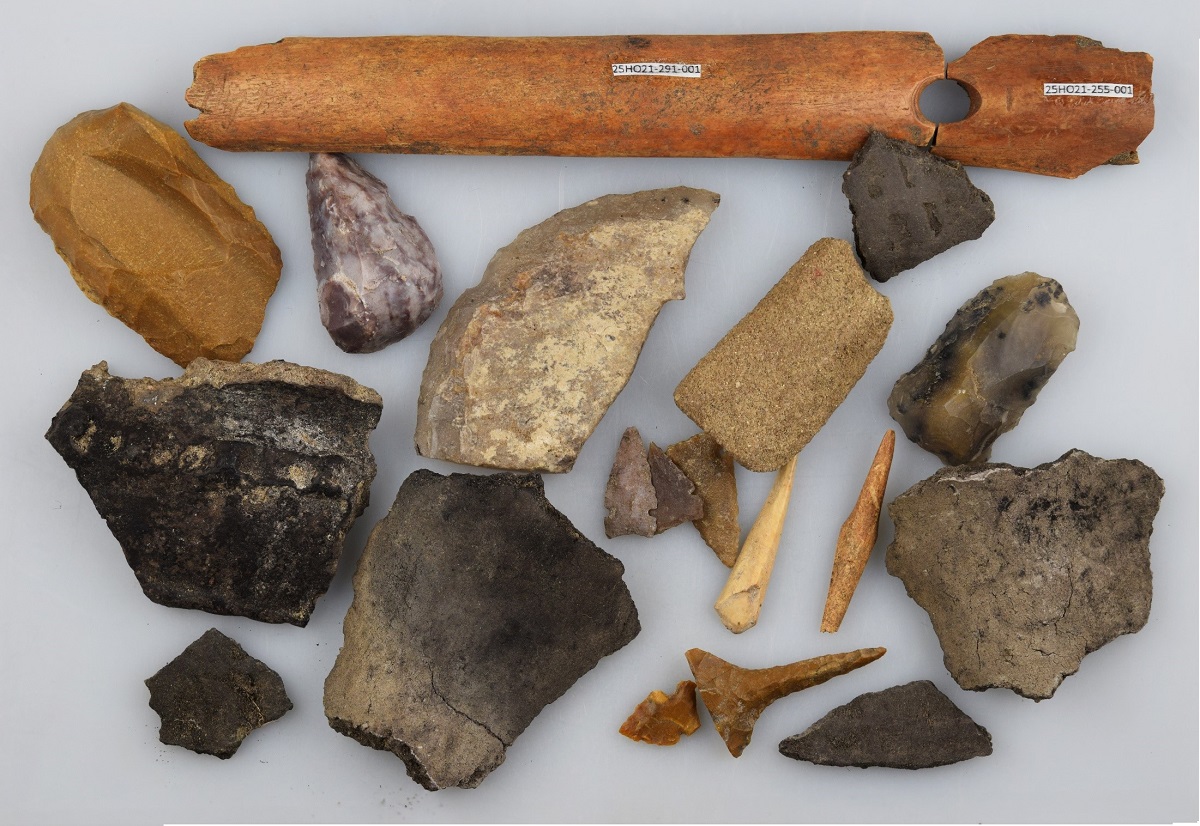When people think of Indigenous Nebraska, the Apache (or Ndee as they prefer) is not a tribe that comes to mind. In fact, however, the ancestors of the Ndee lived across western Nebraska for at least two centuries prior to Euroamerican settlement. About 800-1000 years ago Athapaskan-speaking groups including the Ndee began to migrate south from the Canadian Sub-Arctic along the east side of the Rocky Mountains. This migration is expressed archeologically in Nebraska and surrounding areas of Kansas, Colorado, and Wyoming, as the Dismal River Culture which dates to ca. 1550-1750. The first sites of this complex were found along the Dismal River in the Sandhills — thus the title — but Dismal River is now widely believed to be ancestral Ndee. Several Ndee sites in Nebraska have been excavated including, the Lovitt and White Cat Village sites along the Republican River and the Humphrey site deep in the Sandhills.
Nebraska Ndee sites in red.
Evidence of Ndee occupation is also evident through excavations at Ash Hollow Cave and Signal Butte in the Nebraska panhandle. Archeologists do not know exactly how these archeological sites relate to the different groups of modern Ndee people. The Ndee lived a semisedentary lifestyle in Nebraska, but likely more focused on bison hunting than the more varied subsistence patterns of more eastern tribes. Bison bones dominate the faunal assemblages in terms of the amount of meat provided.
End of bison humerus (upper forelimb) found at Ndee camp near Courthouse Rock. Organic residue preserved in the bone yielded a radiocarbon date of 1625-1670. Impact fractures from extracting marrow are also evident.
Abundant box turtle remains are also a common occurrence at Ndee village sites as are modest amounts of birds and smaller mammals.

Box turtles were eaten and their shells were possibly used as bowls.
Absent are fish remains even though the large villages that have been excavated are next to rivers. Recent work at the Humphrey site by History Nebraska recovered a floral collection of predominantly corn and chokecherry.
Known from archeological excavations at village sites, Ndee houses were circular with a wooden framework. Archeologists do not know exactly what the houses looked like. They lack the outside row of posts and do not appear to be as heavily constructed as the large round contemporary earthlodges of the Pawnee for example but they were certainly much more substantial than tipis.
Stone artifacts commonly found include: triangular unnotched and side notched arrow points, hide scrapers, drills, knives, abraders, and grinding stones. Bone tool including awls, digging tools, shaft wrenches, punches, and other worked bone artifacts have also been found. The pottery most commonly found is typically smoothed and decoration is uncommon. The pottery is often gray to black as well. Later Ndee sites have a few goods such as metal decorations and glass beads of Euroamerican manufacture.
In the mid 1700’s the Dismal River culture began to abandon the central plains. The groups moved southwest likely in response to pressure from mounted nomadic tribes from the north and northwest as well as competition in bison hunting areas from eastern tribes such as the Ponca, Omaha, and Pawnee who left their earthlodge villages and ventured west on twice annual bison hunts. Today the descendants of the Ndee culture live in the American Southwest.

College students excavating the timber ruins of a Ndee lodge buried near the Middle Loup River.
(Published November 9, 2021)
Additional Reading
Bozell, John R. Courtney L.C. Ziska, and Phil R. Geib (eds.)
2021 2016-2019 Archeological Investigations in the Central and Western Sandhills Region: Blaine, Cherry, Grant, Hooker, and Lincoln Counties, Nebraska. On File, History Nebraska, State Archeology Office, Lincoln.
Champe, John L.
1946 Ash Hollow Cave: A Study in Stratigraphic Sequence in the Central Great Plains. University of Nebraska Studies, New Series No. 1. The University of Nebraska, Lincoln.
1949 White Cat Village. American Antiquity 14:285-292
Gunnerson, James H.
1960 An Introduction to Plains Apache Archeology – The Dismal River Aspect Bureau of American Ethnology Bulletin 173 Anthropological Papers No.58, pp. 131-260.
1968 Plains Apache Archeology: A Review. Plains Anthropologist 13:167-189
Hill, A. T. and George Metcalf
1941 A Site of the Dismal River Aspect in Chase County, Nebraska. Nebraska History 22:153-212
Hill, Matthew E. Jr and Sarah Trabert
2018 Reconsidering the Dismal River Aspect: A Review of Current Evidence for an Apachean (Ndee) Cultural Affiliation. Plains Anthropologist 63:198-222.
Strong, William Duncan
1935 An Introduction to Nebraska Archeology. Smithsonian Miscellaneous Collections 93(10). Smithsonian Institution, Washington D. C.






